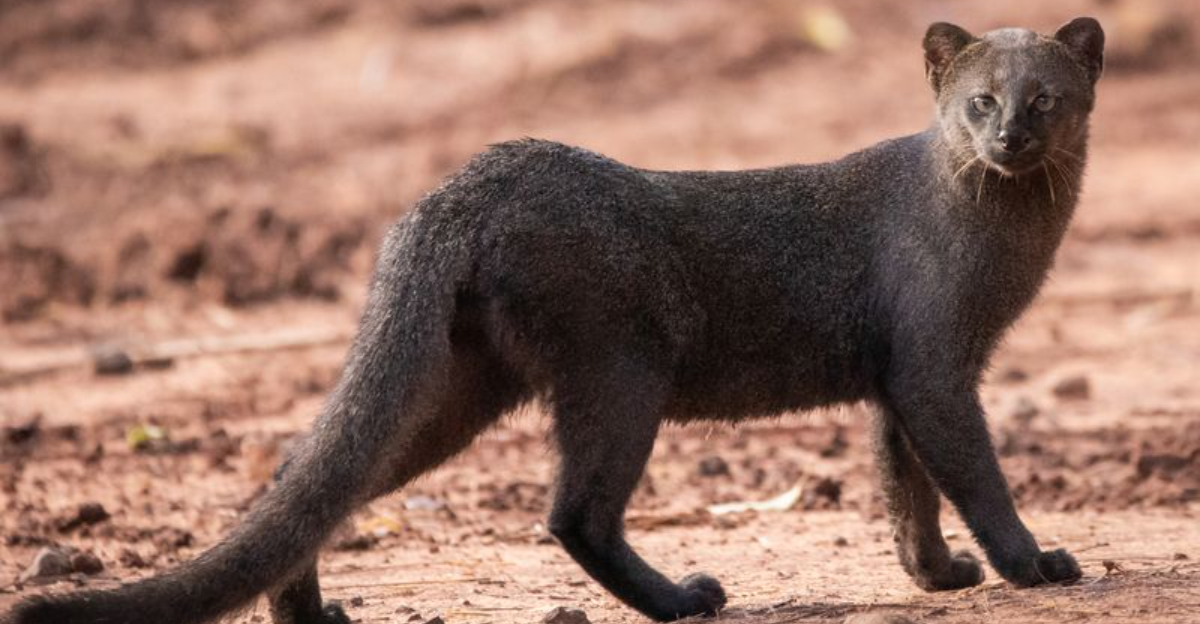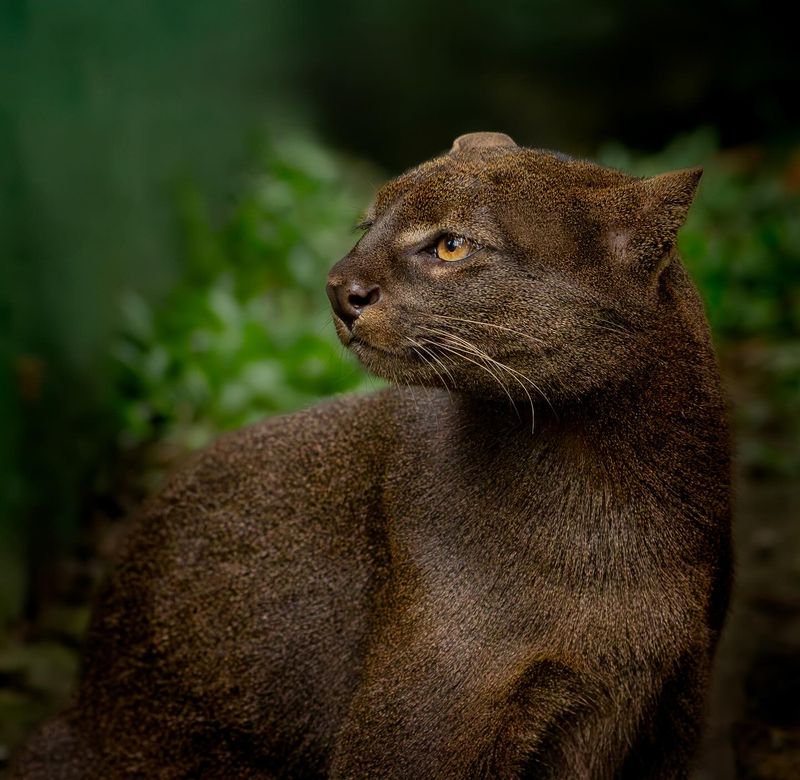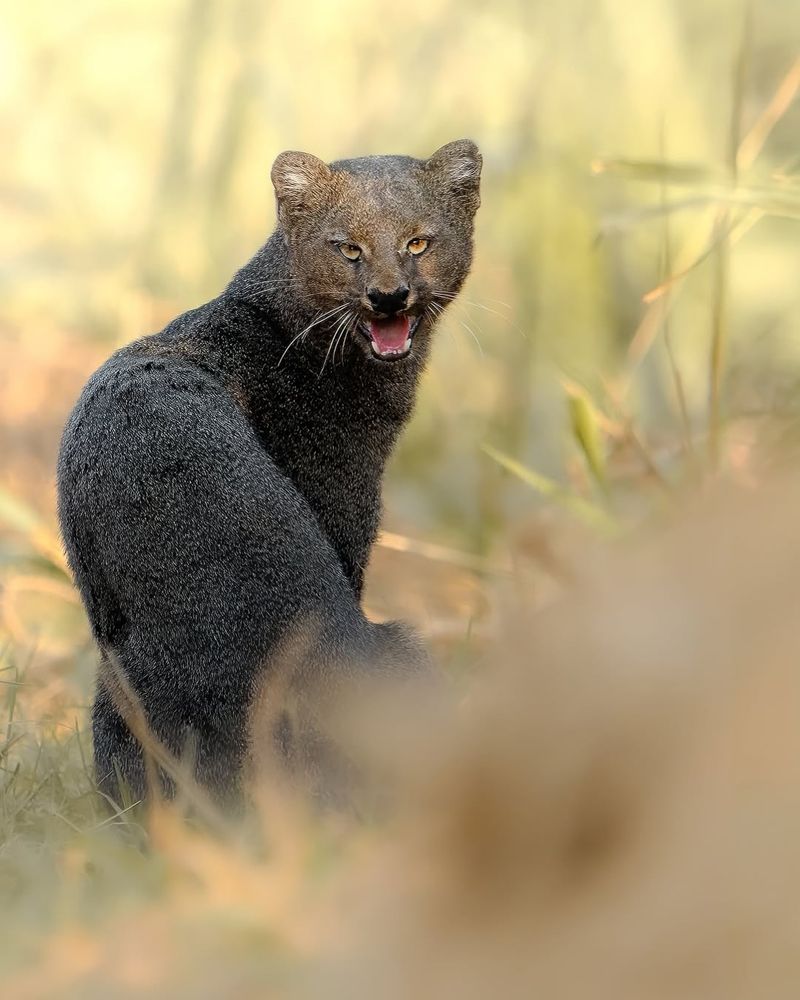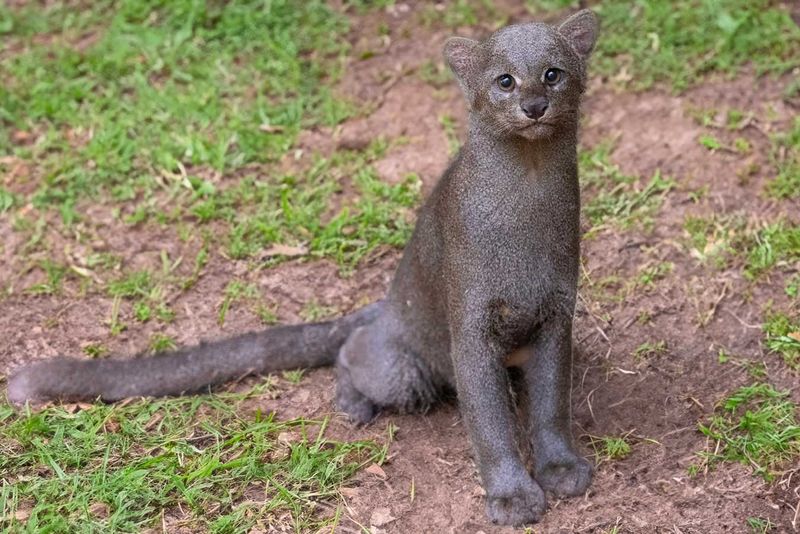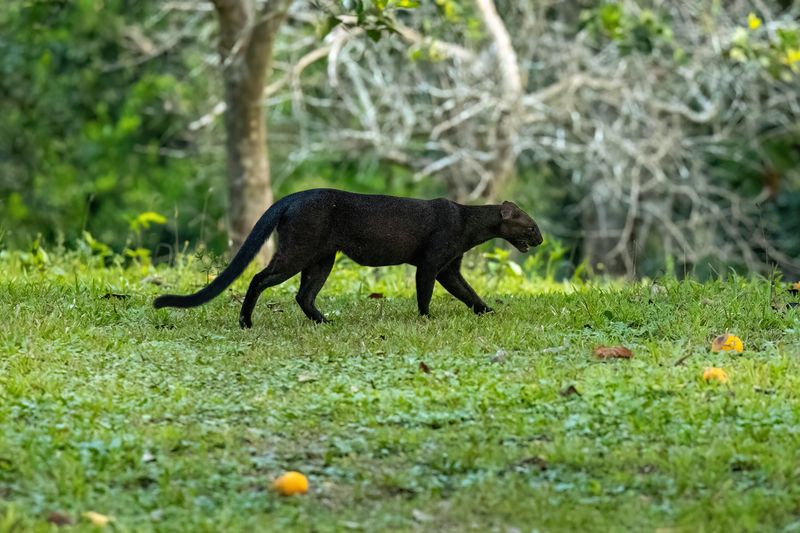📖 Table of Content:
- 1. Unique Appearance That Defies Typical Cat Classification
- 2. Masters of Diverse Habitats From Deserts to Rainforests
- 3. Hunting Techniques That Blend Stealth With Surprising Speed
- 4. Vocal Repertoire That Rivals Domestic Cats
- 5. Mysterious Breeding Habits Rarely Witnessed in the Wild
- 6. Conservation Challenges Facing This Overlooked Species
- 7. Cultural Significance Among Indigenous Peoples
Silent shadows glide through forests and scrublands stretching from Arizona all the way down to Argentina—this is the realm of the jaguarundi, one of the Americas’ most mysterious and underrated wild cats.
Unlike its flashy cousins, the jaguar or ocelot, the jaguarundi moves with quiet precision and a sleek, almost weasel-like silhouette that defies expectations. Twice the size of a house cat but nearly invisible to the human eye, this stealthy hunter has mastered the art of blending into dense undergrowth, slipping unseen through its world.
With a fascinating mix of agility, adaptability, and secretive behavior, the jaguarundi is nature’s best-kept feline secret—and it’s time we finally uncover the stories behind this shadowy predator.
1. Unique Appearance That Defies Typical Cat Classification
Unlike most wild cats, jaguarundis have an unusual elongated body with short legs and a long tail, giving them an almost weasel-like appearance. Their coat lacks spots or stripes, coming instead in solid colors ranging from dark chocolate brown to rusty red.
The jaguarundi’s small, rounded ears and flattened head create a distinctive silhouette among felines. Many first-time observers mistake them for otters or martens rather than cats!
Their unusual proportions serve a purpose – allowing them to navigate dense undergrowth with remarkable agility while pursuing prey or avoiding larger predators.
2. Masters of Diverse Habitats From Deserts to Rainforests
Remarkably adaptable, jaguarundis thrive across an impressive range of environments throughout the Americas. From the arid scrublands of Mexico to the lush tropical rainforests of Brazil, these versatile hunters have carved out territories wherever suitable prey exists.
Morning and evening hours find them most active, though they’ll hunt throughout daylight hours – a rarity among wild cats which typically prefer nocturnal hunting. This daytime activity pattern separates them from their close relatives.
Though they prefer areas with dense vegetation for coverage, jaguarundis have been documented successfully adapting to agricultural landscapes when necessary, hunting along field edges.
3. Hunting Techniques That Blend Stealth With Surprising Speed
Stalking through undergrowth with serpentine grace, jaguarundis employ a hunting style that combines patient observation with explosive bursts of speed. Their diet includes small mammals, birds, reptiles, and even fish snatched from shallow waters with lightning-quick paw strikes.
Sharp climbing abilities allow them to pursue prey into trees when necessary. Many observers report seeing jaguarundis pounce from elevated positions, using gravity to their advantage during hunts.
Unlike larger cats that rely on ambush tactics, jaguarundis often actively pursue prey in extended chases. Their slender build allows them to squeeze through tight spaces that would stop larger predators, giving them access to hidden prey.
4. Vocal Repertoire That Rivals Domestic Cats
For such secretive creatures, jaguarundis possess surprisingly expressive voices. Researchers have documented at least 13 distinct vocalizations in their communication repertoire – purrs, whistles, chirps, screams, and even bird-like chattering.
During mating season, their calls become particularly frequent and varied. Males produce distinctive yowls that carry impressive distances through forest habitats, advertising their presence to potential mates and rivals alike.
Mother jaguarundis use specialized chirping sounds to communicate with their kittens, who respond with high-pitched mews. This complex vocal system suggests these cats maintain more social connections than previously believed, despite their solitary hunting habits.
5. Mysterious Breeding Habits Rarely Witnessed in the Wild
Female jaguarundis create hidden dens in hollow logs, dense thickets, or abandoned burrows when preparing to give birth. After approximately 70 days of pregnancy, they typically deliver 1-4 kittens, born with their eyes closed and completely dependent on their mother.
Unlike many cats with seasonal breeding patterns, jaguarundis can mate year-round in tropical regions. This flexibility gives them a reproductive advantage, allowing females to time births when food resources peak.
Young jaguarundis develop quickly, beginning to accompany their mother on hunts at just six weeks old. By three months, they’re actively participating in hunting, though they typically remain with their mother until reaching almost a year old.
6. Conservation Challenges Facing This Overlooked Species
Despite their wide range, jaguarundi populations face mounting threats from habitat fragmentation as forests give way to agriculture and development. Their secretive nature makes accurate population assessments difficult, complicating conservation efforts across their range.
In the United States, jaguarundis are critically endangered, with possible extinction in Texas and Arizona. Border wall construction has further isolated remaining populations, preventing natural migration and genetic exchange.
Unlike their more charismatic cousins like jaguars and ocelots, jaguarundis receive relatively little conservation attention or funding. This lack of research creates knowledge gaps about their ecological needs and population trends, making effective protection strategies harder to implement.
7. Cultural Significance Among Indigenous Peoples
Among many indigenous communities throughout Latin America, the jaguarundi holds special cultural significance. Several Amazonian tribes consider encountering this elusive cat a sign of good hunting fortune, respecting its proven skills as a successful predator.
Ancient Mayan artifacts occasionally feature jaguarundi representations, though less frequently than jaguars or ocelots. Some archaeological evidence suggests these cats may have been kept as pest controllers around settlements, utilizing their exceptional rodent-hunting abilities.
Traditional ecological knowledge passed down through generations often includes detailed observations of jaguarundi behavior that preceded scientific documentation by centuries. This cultural connection creates potential partnerships between indigenous communities and conservation efforts to protect remaining populations.
